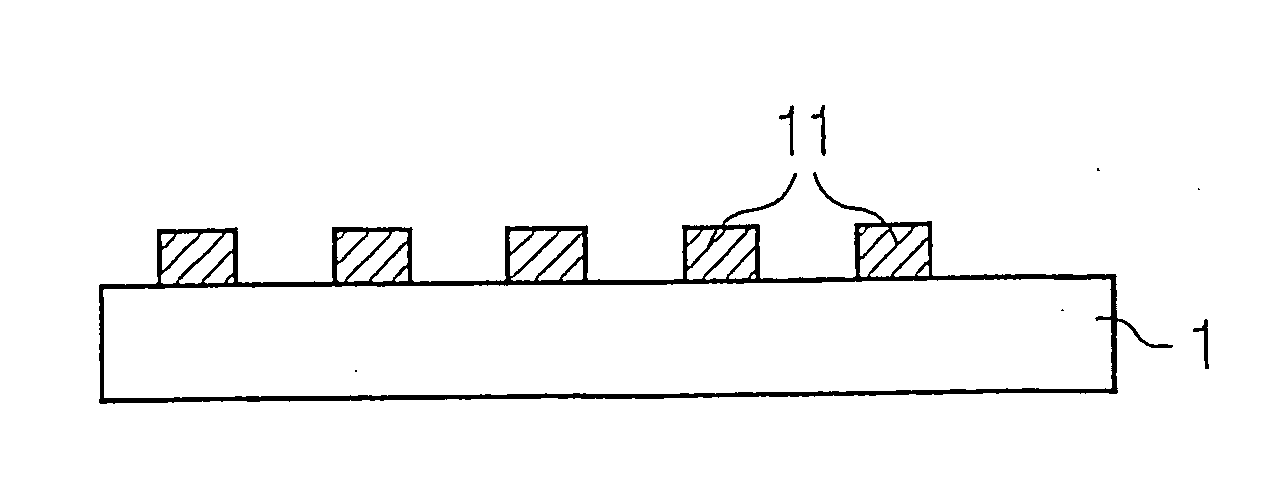Composition which forms an electrically conductive resist layer and a method for patterning a photoresist using the resist layer
a technology of resist layer and resist layer, which is applied in the field of resist layer, can solve the problems of inability to pattern with high resolution and limit the structure resolution, and achieve the effect of dissipating electrical charges and good resolution
- Summary
- Abstract
- Description
- Claims
- Application Information
AI Technical Summary
Benefits of technology
Problems solved by technology
Method used
Image
Examples
exemplary embodiment 1
[0038] A composition according to the invention is prepared by admixing 1 g of terthiophene (an organic compound) from the company Aldrich, with 49.5 g of the novolak solution BLC-001 (a resin) from the company Tokyo Ohka and then 49.5 g of a 4-percent strength solution of anhydrous iron(III) chloride in tetrahydrofuran (crossing agent and solvent) are added thereto. The composition obtained is intimately mixed on a shaking device for 30 minutes.
[0039] The composition according to the invention is applied on a 4″ silicon test wafer by means of spincoating (4000 rpm 20 seconds). The electrically conductive resist layer is subsequently formed by crosslinking. For this purpose, the composition is heated at 160° C. for 120 seconds. A large part of the solvent evaporates in the process, resulting in a dry, electrically conductive, dark-gray, transparent resist film having a layer thickness of 0.5 μm on the silicon test wafer.
[0040] The electrically conductive resist layer is subsequent...
exemplary embodiment 2
[0042] The method is carried out analogously to exemplary embodiment 1; as the composition according to the invention, 1 g of terthiophene is admixed with 49.5 g of novolak solution BLC-001 from Tokyo Ohka and 49.5 g of a 4-percent strength solution of copper perchlorate hexahydrate in tetrahydrofuran are then added.
exemplary embodiment 3
[0043] The method is carried out analogously to exemplary embodiments 1 and 2; as the composition according to the invention, 1 g of terthiophene is admixed with 49.5 g of a cresol-novolak solution from Clariant. Then, 49.5 g of a 4-percent strength solution of copper perchlorate hexahydrate in methoxypropyl acetate are added thereto and the composition obtained is intimately mixed on a shaking device for 30 minutes.
PUM
| Property | Measurement | Unit |
|---|---|---|
| particle size | aaaaa | aaaaa |
| particle sizes | aaaaa | aaaaa |
| thickness | aaaaa | aaaaa |
Abstract
Description
Claims
Application Information
 Login to View More
Login to View More - R&D
- Intellectual Property
- Life Sciences
- Materials
- Tech Scout
- Unparalleled Data Quality
- Higher Quality Content
- 60% Fewer Hallucinations
Browse by: Latest US Patents, China's latest patents, Technical Efficacy Thesaurus, Application Domain, Technology Topic, Popular Technical Reports.
© 2025 PatSnap. All rights reserved.Legal|Privacy policy|Modern Slavery Act Transparency Statement|Sitemap|About US| Contact US: help@patsnap.com



